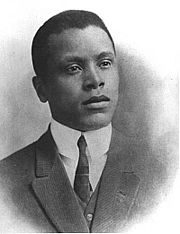As we enter Black History Month, I will take every Monday this February to examine four films that explore the African-American experience in film.
Granted, my perspective is limited in that I am not African-American. Thus, I cannot bring a personal perspective as to whether the films are true to how African-Americans see themselves or their history. However, my perspective is that of someone who loves cinema and who sees in it an excellent way of seeing the changes that have occurred in society. Sometimes an outsider's vantage point is just as good as those from the inside.
We got in this year's retrospective films that go from the days of slavery right down to a burgeoning black middle-class. In the four hundred years since the first Africans were brought to the Americas to the election of the first black President, few communities have faced greater adversity and simultaneously enriched the land they found themselves in, becoming a full part of America in its glory and its failures. The African-American community has grown from being placed in the worst position in America to having major influences in politics, religion, science, business, and the arts.
Before the end of segregation, we had extraordinary figures like Booker T. Washington, Madam C.J. Walker, and George Washington Carver. We've gone from blacks being forbidden an education to the founding of Howard University, Spelman College, and the rise of respected professors like Henry Louis Gates. Despite all the bigotry and legalized oppression, African-Americans managed to thrive, survive, and contribute to the American experience.
Film was no exception, from the pioneering work of Oscar Micheaux to the dual images of contemporary black life presented by Spike Lee and Tyler Perry. Film and its imagery influence how we see the world and others whether we recognize it or not.
Non African-Americans may be given a negative idea about black lives today, that it's all Mike Brown and/or Michael Oher pre-Blind Side, one that is desperate, crime-ridden, and perhaps uneducated. The idea of the 'thug' may be the reason people fear young black men, and it is up to the viewer if those who make these images through film and music contribute to the irrational fears and negative stereotypes or reflect reality. African-Americans themselves may think that one cannot be a certain way because it means 'acting white'. What does that mean? Are African-Americans responding to how they really are, or on the images of themselves presented to them?
For this retrospective, however, at least this year, those heavy questions will be left for later. I will concentrate on the films themselves, and hopefully at the end of the month I can concentrate on whether the films do reflect the African-American experience as I understand it. It's a fascinating subject, one I hope to explore and bring a positive perspective to it.
With that, I begin my African-American Cinema Retrospective of 2015.
 |
| Two Image Makers of Black Cinema. Is it farce, is it real, or is it a combination? |


No comments:
Post a Comment
Views are always welcome, but I would ask that no vulgarity be used. Any posts that contain foul language or are bigoted in any way will not be posted.
Thank you.